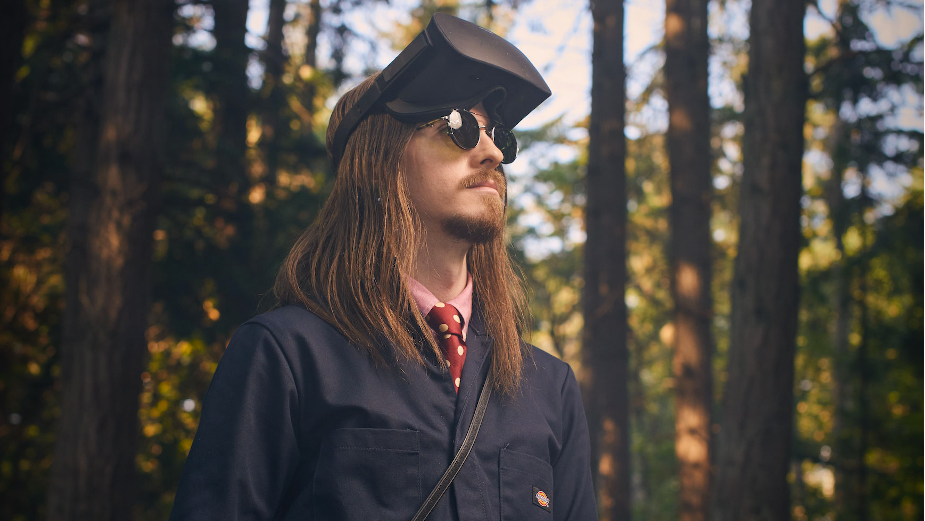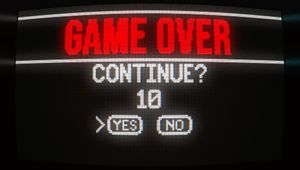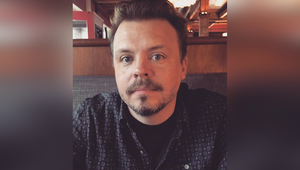
Marcus Kulik on His View Out the 'Rear Window' for The New Blank’s Looper Projects

In the spirit of encouraging creative exploration, The New Blank created a structure and a platform called The Looper Projects. Each animation in The Looper Projects is required to be between five - 15 seconds, loop and should showcase techniques they are experimenting and playing with - with a specific theme. Oh, and they need to keep it under 20 hours of work, start to finish. Marcus Kulik describes his vantage point on the theme Emergence in his Looper Project 'Rear Window'.
Q > Rear Window - the name immediately sets a mood. What inspired the film and its naming?
Marcus Kulik > The piece takes its name directly from Alfred Hitchcock’s classic film. This is because all of the little details throughout are directly inspired by my own personal, modern, Rear Window experience. Out of my apartment window I’ve seen the Capitol Hill neighbourhood in Seattle turn into a ghost town at the beginning of the pandemic, then hundreds of people come out to protest the murder of George Floyd, with police responding by locking down 4 blocks including where I live, requiring ID to enter the area. There were weeks of protests being met with force and chemical riot control munitions as well as a few weeks where nearly every night the air would be thick with tear gas and pepper spray.
I also witnessed the formation of CHOP, and how people coming together can bring new life to the neighbourhood that had been the site of countless acts of police brutality against people that were there to protest that very behaviour. The cycle repeats though, and CHOP was eventually cleared out and the police barricaded the area again, building walls around their precinct and the sidewalk. The animation evolved with what was happening outside, continually adding elements that were nods to what I was seeing as I sat at my window with my cameras, documenting the protests.
Q > When you looked at the stylistic approach to the animation, what informed the aesthetic choices?
Marcus > I’ve always found urban decay oddly beautiful and fascinating. It felt like the right environment to stage this little story in, a small part of a city that has seen better days but still holds onto its soul. Other elements are inspired by the real world events that inspired the story such as street lights illuminating a mix of rain and smoke in the middle of the night. The viewpoint is analogous to my own, above and slightly removed from everything that took place, but not so far away that it could be ignored.
Q > What was it like to work with the team in this capacity?
Marcus > It’s always great to work with them! I got so much invaluable feedback and ideas to really push this animation so far beyond what I initially imagined it was going to be. I’m not sure exactly how many iterations this project went through, but at every step we were finding new ways to tighten up the look and meaning of the piece. While the actual execution of the animation was mostly meant to be a solo effort I was glad I could rely on everyone to help with brainstorming or blocking out where everything was going to go.
Q > How did you become an animator?
Marcus > I was lucky enough to go to a high school that had an amazing art department. I did everything I could to fill my schedule with all different sorts of art classes, from film photography to painting, or graphic design. My favourite class was computer animation though, and ended up spending a good chunk of my free time in the lab teaching myself new software for 3D modelling and animation. Without really knowing what the industry was like, I went to college thinking I would enter the animation program and try to get a job doing character animation for Pixar or some studio like that. I had lofty goals but none of my previous work had really been focused around character animation and to be honest the little experience I had in it wasn’t as enjoyable as the graphic design or VFX stuff I had messed around in. Luckily, I learned about the motion graphics department through a friend and immediately knew that’s what I wanted to do.
Q > Who or what are some of your biggest creative influences?
Marcus > I’ve always loved work that pulls from my other interests outside of animation such as technology, science, photography, and fast cars and motorcycles. I’m always picking up ideas and inspiration from whatever I happen to be diving deep into on any given day, even if it is just staying in and playing through my backlog of video games. Two people in particular always seem to scratch those specific itches with everything they put out; Patrick Clair and Ash Thorp. Patrick Clairs’ animation Stuxnet: Anatomy of a Computer Virus was one of my early introductions into motion graphics as its’ own thing as opposed to computer animation in general. That piece has always stuck with me and to this day I still name all my devices STUXNET_something-or-other.
Q > What lessons did 2020 inflict upon you?
Marcus > Two big ones: You can always start learning something new, even if you can’t leave your home. I started picking up so many tools and tricks I never thought I would have the time to learn before lockdown forced me to get creative in how I would spend all my free time and not get stuck in a rut. The other is: There is always a way to contribute to something you care about, it might not be what you see everyone else doing, but some skills you thought were completely unrelated could become incredibly valuable given the right circumstances.
Q > What do you want to see outside of your window in 2021?
Marcus > Hopefully a society where people gather to protest against violence, injustice, and systemic racism don’t have to fear for their safety at the hands of local police or out of town hate groups. I also want to see neighbours that are more understanding and willing to listen to the activists, and stop placing their want of a quiet, empty neighbourhood at a higher level of importance than the issues that are being protested. Finally I want to see a post-pandemic city reopening parks when it’s safe so that I can meet all these great people I’ve met throughout the last six wild months.













